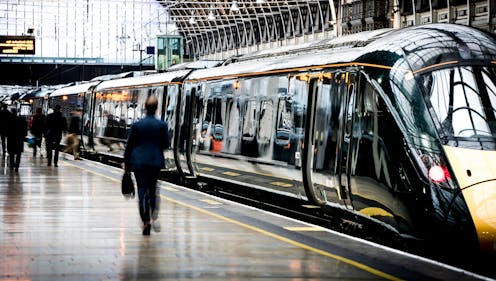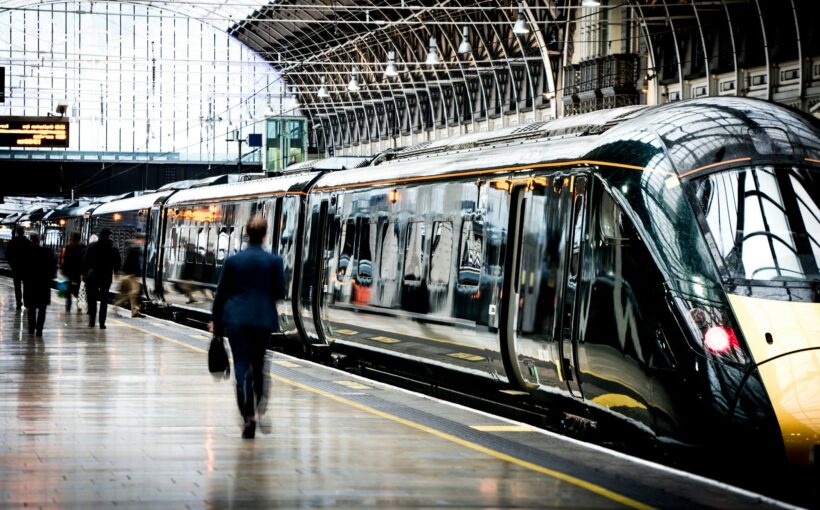
Railway travel is a strange thing. There are some journeys that are undertaken for pleasure – particularly on steam trains – but the vast majority happen because people need to get somewhere. The railway is merely a means to an end. Efficient rail transport facilitates economic production and economic growth.
The argument that public ownership of vital transport infrastructure is better for the country is not a new one, nor is it limited to the left. I imagine few, if any, would regard Winston Churchill as a socialist, yet in 1918 he argued that with railways in the hands of the state, “it may be wise or expedient to run them (to) develop industry, place the trader in close contact with his market, and stimulate development” rather than to maximise profit.
Ironically, by the time the railways were nationalised, Churchill had changed his mind based on the record of Eric Geddes, minister of transport from 1919 to 1921. However, he was right in his initial analysis. From 1948 until the mid 1990s, under public ownership, the then-British Railways (BR) developed from a war-battered service in need of investment and modernisation to be considered by some as one of the best regular integrated rail services in the world.
For example, in 1989 BR was recorded as being 40% more efficient than eight comparable European rail systems, while its research and engineering expertise was also in the spotlight. Its high-speed train (the iconic InterCity 125) broke new ground with a speed of 148mph in 1987 (still a world record for a diesel train) while proving itself to be a reliable workhorse in the country’s rail fleet.
BR also invested in new rolling stock. Indeed, Britain’s rolling stock was on average two years younger in 1996 than it was in 2013.
Privatisation: The end of the line?
In the 1980s, the Thatcher government reversed many of the nationalisations of the post-war era, overseeing the beginning of the transfer of much of the UK public’s productive assets to the (often international) corporate sector.
Insofar as she viewed privatisation as a means to “spread the nation’s wealth among as many people as possible”, Thatcher’s policies failed. Judging from ownership of stocks and shares, British citizens’ share of national wealth continued its decline in the 1980s. Similarly, there is no evidence privatisation improved the efficiency of formerly publicly owned assets on average.
Despite the failures of privatisation, not to mention its unpopularity with the British people, Thatcher’s successor, John Major, oversaw the “privatisation” of British (not Northern Ireland) railways between 1994 and 1997.
The network was not privatised in the usual sense of the word. Railways have always relied on implicit and explicit public subsidies, and continue to do so. It is rather the case that the railways were franchised.
The franchising system is complex. Train operating companies (TOCs), subsidised by the taxpayer, run franchises awarded by the Department for Transport. TOCs rent their rolling stock from the (taxpayer-subsidised) rolling stock companies (Roscos) and run their services on lines owned by the publicly owned Network Rail (not having to pay the full cost of lines is yet another effective subsidy of the industry).
Some of these subsidies go into the rail network, but much of this taxpayer cash simply becomes dividends for the franchise holders. The start of COVID lockdowns saw passenger numbers flatline and, in an (effective) renationalisation, the government stepped in to bear most of the rail companies’ risk. Before this, under the franchise schemes, subsidies were around twice their pre-“privatisation” levels in real terms.
Although rail “privatisation” was promoted by EU directive 91/440, no other EU nation followed the British example. Few, if any, comparator nations have such a high level of “private” rail provision as the UK.
And few, if any, governments would adopt the British model now. On the contrary, the British case is held as a cautionary tale, with high prices, fragmented services and ageing rolling stock all feeding into the network’s troubles.
Ironically, prior to COVID, many British train services were run in whole or in part by the nationalised rail operators of other EU countries. Even the market, it seems, prefers public provision.
Return journey
The easiest route to renationalisation, if we really can call it that, given that the railways were never properly privatised, would be for government to admit its mistakes and simply not renew the franchise of the TOCs. This is Labour Party policy. This route wouldn’t solve all the railway’s problems – there would still be the issue of the Roscos to sort out. But it would be a start.
There is a precedent for this. In 2009 the East Coast Mainline operator National Express East Coast walked away from the TOC contract, meaning that the public sector had to step in and run the line.
Passenger satisfaction and profits subsequently improved. Such was the scale of the improvement that many assumed the “privatisation” experiment was over. However, in 2015 the line was re-franchised. After three more years, when it was clear the new franchise was underperforming, the line returned to public ownership.
The policy of renationalisation is not really that – the railways were never properly privatised. In truth, it’s more like ceasing to prop up at least part of the franchise scheme with taxpayers’ hard-earned money.
![]()
Kevin Albertson does not work for, consult, own shares in or receive funding from any company or organisation that would benefit from this article, and has disclosed no relevant affiliations beyond their academic appointment.



